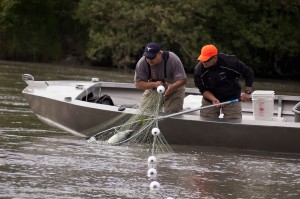Quinault Indian Nation
TAHOLAH, WA (6/17/13)— An independent report delivered to the Intertribal Timber Council last week concluded that federal funding levels are lower today than in 1993, leading to reduced tribal staffing levels and disregarding the principles of federal law, according to Fawn Sharp, President of the Quinault Indian Nation and Affiliated Tribes of Northwest Indians.
The report, the third made since 1993 by the Indian Forest Management Assessment Team (IFMAT), was delivered to the annual ITC symposium hosted by the Menoninee Tribe and Stockbridge Munsee Community in Wisconsin last Tuesday. The report concluded that federal funding and, consequently, tribal forest staffing levels are far below those of comparable public and private programs. Achieving equitable funding for tribal programs was a primary purpose for the establishment of the Indian Forest Management Assessment Team and the passage of its enabling legislation, the National Indian Forest Resources Management Act (NIFRMA) in 1990. Still, tribes nationwide have assumed greater leadership roles through self-determination and self-governance.
“The accomplishments of Indian tribes in improving management of our forests, fish, wildlife, and water have truly been impressive. Tribes have some of the best scientists and natural resource management programs in the country. We have proven that tribal forests can be managed to provide Indian and non-Indian jobs, support tribal and overall economic development, and sustain our fish, wildlife, water, foods, medicines, and cultures. Healthy forests mean healthy waters, air, animals and people. On the Quinault Reservation, we manage for sustainability of the environment, the economy, and our cultures. As stewards of the land, we take our responsibilities seriously, knowing that today’s decisions will affect our people for seven generations,” said Sharp.
The IFMAT Report does, however, show that our forest resources and forestry programs are suffering from the lack of equitable federal funding. The potential for tribal management to serve as models for sustainable forestry cannot be fulfilled unless the enormous funding disparity between tribal and non-tribal programs is corrected, according to Sharp.
“We build the best teams and the best programs because we know we must care for the land and natural resources to honor Mother Earth. We have always been here and will always be here. We invest in our natural resource programs for the long run—not just for ourselves, but for our children, and the generations to come, tribal and non-tribal alike. We are appalled that the federal government continues to fail to provide the resources needed to fulfill its fiduciary trust responsibilities for management of Indian forests. The independent, blue ribbon panel of experts of IFMAT concluded that an additional $100 million and 800 staff positions are needed nationwide to meet even minimum requirements. The federal government promised to help us protect these lands in nation-to-nation treaties. In the 1970’s, the Quinault people were forced to sue the United States for mismanagement of our forests. We know the country faces serious fiscal challenges, but that’s not an acceptable excuse. We are only asking the United States to keep its word and fulfill its treaty and trust obligations,” said Sharp
When NIFRMA passed in 1990, it called for IFMAT reports every 10 years to be delivered to Congress and the Administration. The law declared (1) that the United States has a trust responsibility toward Indian forest lands and (2) that federal investment in Indian forest management is significantly below the level of investment in Forest Service, Bureau of Land Management or private forest land management (25 USC Sec. 3111).
The IFMAT reports are national in scope and focus on: Management practices and funding levels for Indian forest land compared with federal and private forest lands; the health and productivity of Indian forest lands; staffing patterns of the Bureau of Indian Affairs and tribal forestry organizations; timber sale administration procedures, including accountability for proceeds; the potential for reducing BIA rules and regulations consistent with federal trust responsibility; the adequacy of Indian forest land management plans, including their ability to meet tribal needs and priorities; the feasibility of establishing minimum standards for measuring the adequacy of BIA forestry programs in fulfilling trust responsibility and recommendations of reforms and increased funding levels.
In the 49 states outside of Alaska, there are 18 million acres of Indian forests and woodlands on 294 separate Indian reservations. Of this land, nearly 10 million acres are considered commercial woodlands or timberlands. The states of Washington, Oregon, Montana, Idaho, Arizona, New Mexico, California, Minnesota and Wisconsin have the greatest concentration of tribal forests. IFMAT visited the Quinault, Makah, Tulalip, Yakama, Colville, and Spokane tribes as part of the third assessment of the status of Indian forests and forestry.




